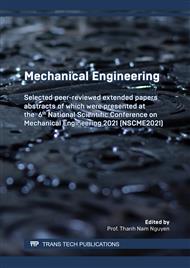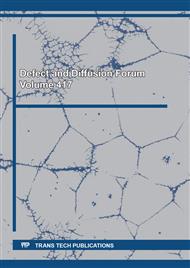p.17
p.23
p.29
p.35
p.45
p.51
p.61
p.67
p.73
Influence of 3D Printing SLS Process Parameters on Product Tensile Strength
Abstract:
Three-dimensional (3D) printing is a breakthrough technology that is being researched, developed and applied extensively in many areas of production around the world. One particular application is Selective Laser Sintering (SLS), in which a high-powered laser turns powdered material into a solid mass; however, in Vietnam the research and application of laser sintering is not very widespread, yet determining the durability, especially the tensile strength, of products made from this printing technology is necessary. The parameters during installation have a significant effect on the characteristics of the printing elements, so they need to they need to be studied. In this project, we focused on the influence of printing parameters to be able to optimize them to achieve the highest tensile strength in the products. The process consisted of producing specimens with 2 parameters to be tested: laser power and feed. The experimental results on the tensile strength were collected, and the influence of the printing parameters of the finished product were charted and analyzed. The result of the project is that laser power is the most important printing parameters that influences tensile strength.
Info:
Periodical:
Pages:
45-50
Citation:
Online since:
June 2022
Authors:
Price:
Сopyright:
© 2022 Trans Tech Publications Ltd. All Rights Reserved
Share:
Citation:



